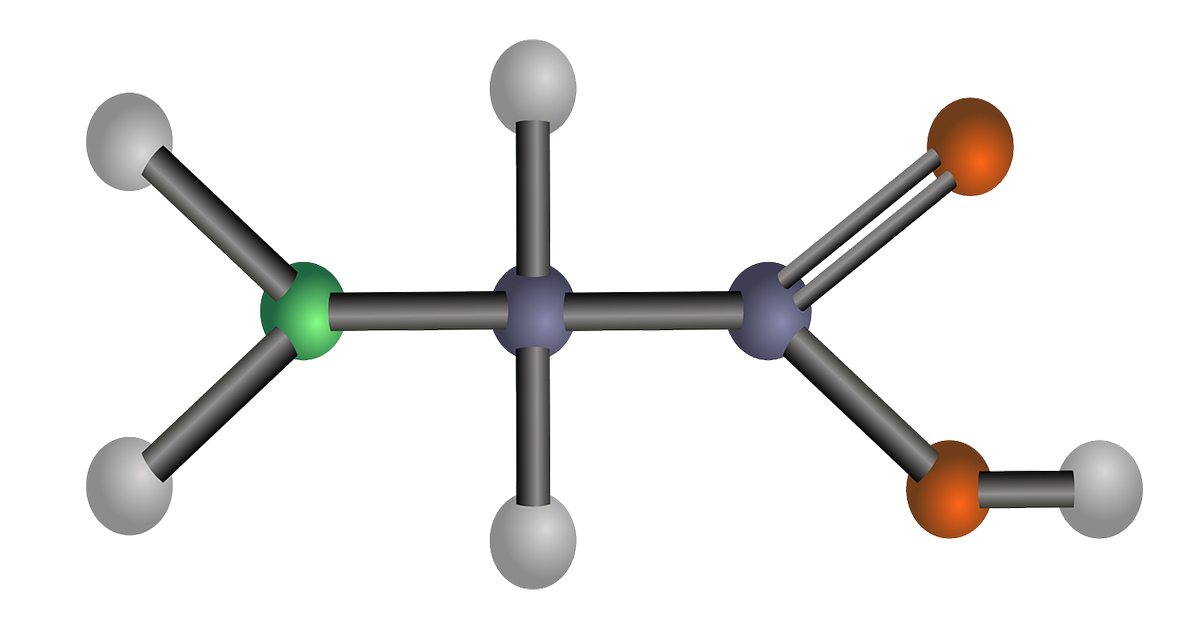Category: Patients
Patient Has Lived Disease Free Since Diagnosis of Malignant Pleural Mesothelioma
Doctors in Japan describe the unusual case of a long-term mesothelioma survivor who was treated with chemotherapy and hyperthermia.
In the Dec. 28 online issue of the Journal of Medical Case Reports, doctors at Gunma University School of Medicine in Japan detail the case of a 61-year-old man who has lived disease free for seven years after being diagnosed with malignant pleural mesothelioma. Pleural mesothelioma is a cancer of the lining of the chest cavity caused by exposure to asbestos. The cancer typically has a high mortality rate.
The man was experiencing chest pain and had a history of exposure to asbestos for approximately five years. A CT scan showed a thickening of the pleural lining of his chest. It also revealed tumors had invaded the wall of patient’s chest. Doctors diagnosed the patient with stage 3 malignant pleural mesothelioma based on blood test results and an examination.
The patient was eligible for surgery, but refused to undergo surgery or receive radiation treatment. So doctors administered systemic chemotherapy with hyperthermia, which the medical center used as treatment for patients with inoperable lung cancer. The chemotherapy drugs consisted of cisplatin and irinotecan, an antitumor drug that interferes with how cancer cells multiply.
Hyperthermia is a type of cancer treatment in which body tissue is exposed to high temperatures of up to 113 degrees. According to the National Cancer Institute, high temperatures can damage and kill cancer cells, causing tumors to shrink, usually with minimal injury to normal tissues. Hyperthermia also may enhance the effectiveness of some anti-cancer drugs. It’s usually used in conjunction with other cancer treatments. The patient underwent hyperthermia treatment immediately after receiving the irinotecan drugs.
A month after the first cycle of mesothelioma treatment, the patient had a follow-up CT scan which showed that the thickening of the pleural lining had disappeared. He still has some fluid in his chest cavity, which is common for mesothelioma patients. The patient underwent three sessions of hyperthermia and a single course of chemotherapy. Another CT scan six years after the end of treatment revealed no evidence of a return of the cancer.
Patients diagnosed with mesothelioma typically have a poor prognosis because of the cancer’s resistance to conventional treatments. Many survive less than two years. As a result, medical researchers continue seeking more effective treatments for mesothelioma to extend the lives of patients and improve their quality of life.
The authors of the case report conclude that hyperthermia and chemotherapy may be a new and safe therapeutic option for treatment of pleural mesothelioma. They say that additional clinical studies of the combination of chemotherapy and hyperthermia are needed to further assess the effectiveness of the therapy.

Mesothelioma Survivor Pleads with Researchers to Find a Cure
Many people will say that when they were told they had mesothelioma it hit them like a bolt of lightning, leaving them shocked and depressed. Although many of the patients experienced symptoms such as shortness of breath, fatigue and fluid on the lungs at the time of their diagnosis, they assumed they had the flu, bronchitis or some other “simple” respiratory ailment. Jan Egerton, however, was practically relieved to learn she had mesothelioma. Even though she knew the disease was life-threatening, for her, knowing the source of her years of pain meant she could begin treatment.
Due to its similarity to other illnesses and the rarity of the disease, diagnosing mesothelioma is difficult. But Egerton endured seven years of excruciating pain, missed diagnosis, fear that she was losing her mind, and skepticism from doctors before finally finding one willing to work with her to identify the source of all her symptoms.
Egerton first began having pain in her back in 1998, and was finally diagnosed with pleural mesothelioma in August 2004. At that time, she was told she had just one year to live. Eight years later, Jan is a mesothelioma survivor.
Since her diagnosis, Jan said, she has been “on a mission to live as long as possible and, if I can buy more years, then I will.” Although Egerton has survived many years beyond her doctor’s prognosis, the road she has traveled has been extremely difficult. As a result, she is working hard to raise awareness of the “nasty cancer,” and to urge researchers to continue to focus on finding a cure and new treatments for the cancer. She is also reaching out to other mesothelioma patients and their families and is building a community of support among those dealing with the disease.
Egerton, who is now 52-years-old, lives in the UK with her husband and two dogs. She has carefully chronicled her journey and hopes that through her blog, “Mesothelioma – Jan’s Journey,” others facing a similar battle will know what to expect and will have someone to turn to for support.
Jan has had virtually every treatment option available to mesothelioma patients, and she has been completely open and honest through her blog in explaining the procedures and how her body has reacted to them. Beginning with her first surgery in ’04, Jan has also had VATS (video-assisted thoracic surgery), radiotherapy, chemotherapy (two full cycles), cryoablation and more surgery. Jan is now in the midst of her third round of chemotherapy.
Jan has seen too many of her friends succumb to the cancer, and her frustration continues to grow that there is no cure. And her ongoing treatments are a testament to the fact there is no effective method for stopping the recurrence of mesothelioma. “I hope and pray that something will be found to stop the dividing of these unnatural cells soon and this will then put an end to the many deaths we have through mesothelioma,” Egerton wrote in one recent blog entry.
Jan wants others to know that even though the battle against mesothelioma is difficult, others have been through it before and leaning on them is important for survival. “Don’t be alone in this battle … We are all here to help each other.”
Jan Egerton will periodically be offering her insight and information about mesothelioma treatments as well as information about the impact the disease has on people’s lives.

New Cancer Fighting Drug Available to Mesothelioma Patients
A new cancer fighting drug is available to newly-diagnosed mesothelioma patients as part of a clinical trial at the University of Southern California.
Dr. Parkash Gill, an oncologist who supervises the mesothelioma laboratory at the USC Norris Comprehensive Cancer Center, announced this month that the cancer fighting drug EPH-B4 is available to qualifying patients who have not undergone any conventional treatment and to patients who have exhausted other treatment options such as chemotherapy and surgery.
Due to the role that the EphB4 protein plays in the transition of benign tumors into a malignant state, Gill has focused much of his research on developing EphB4-specific antibodies that have been shown to significantly interfere with blood vessel formation and reduce the size of tumors in animal experiments.
Gill said the drug has shown great promise as a solo treatment and in conjunction with chemotherapy drugs such as Alimta, Cisplatin and Carboplatin. It has been submitted to the U.S. Food and Drug Administration for a phase I clinical trial.
Gill and a team of researchers reported in the American Journal of Pathology that that drug inhibited the development of malignant tumors by interfering with the sprouting of new bloods vessels from existing vessels.
The Mesothelioma Research Foundation of America, which is supporting Gill’s research, provides funding to find a cure for mesothelioma.
Doctors diagnose approximately 2,500 to 3,000 new cases of mesothelioma in the United States each year. Most mesothelioma sufferers are older workers, retired workers and veterans who inhaled cancer-causing asbestos fibers in workplaces decades ago. Asbestos can trigger respiratory problems and growth of cancerous tumors 20 to 50 years after breathing or swallowing the microscopic fibers.
To contact Dr. Gill about the clinical trial, click here.

Mesothelioma Cases Increasing in Australia and United States
The first report of a new national registry of mesothelioma in Australia shows that 27 people per million population are diagnosed with mesothelioma. That is nearly double the incidence of mesothelioma in the United States. Still it likely represents an undercount of mesothelioma cases in Australia due to delays in coding some diagnoses. Australia has one of the highest rates of mesothelioma in the world, according to the report by Safe Work Australia, a government agency that promotes worker safety and health.
According to the report, men accounted for 85 percent of the reported cases of mesothelioma since the new registry became operational in July 2010. Three-fourths of the people with mesothelioma were 65 years or older when diagnosed. The most common diagnosis was malignant pleural mesothelioma, a cancer of the lining of the chest cavity. Pleural mesothelioma represented more than nine out of every 10 diagnoses.
The overall rate of mesothelioma has been increasing in Australia since 1982 when data on new cases first became available, according to the report. Similarly, a 2009 report by the National Institute for Occupational Safety and Health indicated that deaths from mesothelioma are still increasing in the United States, based on data from 1998 through 2005. The overall rate in the U.S. is 14 deaths per million population per year. But only a half dozen states in the U.S. have mesothelioma rates of 20 per million population or greater, according to NIOSH.
Building materials containing asbestos and other asbestos products were widely used in Australia just as in the United States in the decades after World War II. As of August 2012, there had been 310 deaths of people diagnosed with mesothelioma in 2011 in Australia. Mesothelioma is an aggressive form of cancer and many people are not diagnosed until the cancer has reached an advanced stage.
Construction workers and people in building trades and electrical trades had the highest likelihood of exposure to asbestos, leading to a mesothelioma diagnosis in Australia. Currently in the United States, an estimated 1.3 million construction workers and general industry workers are potentially being exposed to asbestos, according to the U.S. Centers for Disease Control.
Historically, Australia has been one of the world’s highest users of asbestos, which was mined down under. Because of the long lag time of 20 years to 50 years between exposure to asbestos and appearance of the disease, the report predicts that incidence of mesothelioma in Australia likely still increasing and has not peaked.

Research Focuses on Treatments That Target Mesothelioma Tumors
For 15 years, Dr. Raffit Hassan, a clinical oncologist at the National Cancer Institute, has been researching the protein mesothelin and its use in the treatment of mesothelioma. Mesothelioma is a cancer of the lining of the chest cavity and abdomen associated with exposure to asbestos.
A protein, mesothelin is present in normal tissue. But certain types of malignant tumors including mesothelioma express high levels of the mesothelin, making it a useful target for tumor-specific drugs. The ultimate goal of the National Cancer Institute is to develop new treatments for mesothelioma and other forms of cancer.
“Mesothelioma is not a very common disease, but it’s a tumor for which we really need to develop a good treatment,” Dr. Hassan said during a recent teleconference sponsored by the Meso Foundation, which provides information, research funding and advocacy for mesothelioma victims.
The first drug targeting mesothelin that Hassan has studied in clinical trials involving mesothelioma patients was Amatuximab, an experimental drug developed by Morphotek, a Pennsylvania company that develops cancer treatments. The treatment is an immunotoxin,a human-made protein that is designed to bind to cancer tumor cells, then inject toxins to kill them.
“I have been working on the same project for 10 years,” Dr. Hassan said. “I think we are starting to see some good results.”
The drug has been through phase I and II clinical trials and the results will be presented this summer. It has not yet been approved by the Food and Drug Administration.
The researchers are evaluating whether the drug when combined with chemotherapy drugs is more effective at controlling mesothelioma.
“The results show the drug is safe and there is activity,” Hassan said. “To be really sure the drug benefits patients we’ll need to do a randomized clinical trial. That will be the next step.”
Approximately 3,000 people are diagnosed with malignant mesothelioma each year. Most are older workers, retired workers and veterans were exposed to asbestos dust in the workplace or during military service. Symptoms of mesothelioma typically take 20 to 40 years to appear. But the cancer is aggressive and more effective treatments are needed to control the disease and extend the lives of mesothelioma patients.
For more information about mesothelioma, click here.

Free Mesothelioma Patient & Treatment Guide
We’d like to offer you our in-depth guide, “A Patient’s Guide to Mesothelioma,” absolutely free of charge.
It contains a wealth of information and resources to help you better understand the condition, choose (and afford) appropriate treatment, and exercise your legal right to compensation.
Download Now